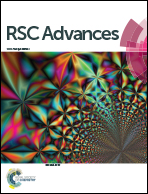Glass structure and crystallization of Al and B containing glasses belonging to the Li2O–SiO2 system
Abstract
The aim of the present work is to investigate the effect of substituting B2O3 for Al2O3 in a non-stoichiometric lithium disilicate (Li2Si2O5, LS2) glass composition belonging to the system Li2O–K2O–Al2O3–SiO2. Addition of equimolar amounts of K2O and Al2O3 to binary lithium silicate glass compositions improves chemical resistance, sintering behaviour and mechanical properties of the glass-ceramics produced from sintered glass powder compacts. However, in bulk (monolithic) glasses Al2O3 addition hinders bulk nucleation. It also suppresses crystallization of LS2 and promotes formation of a meta-stable crystalline phase called lithium metasilicate (Li2SiO3, LS). The results showed that B substitution resulted in the depolymerisation of the glass network increasing the percentage of NBOs leading to decreasing viscosity, molar volumes, oxygen densities and glass transition temperatures. The simultaneous addition of Al and B into the glass composition resulted in decreased liquid–liquid phase segregation (LLPS) and lower crystal nucleation tendency when compared to Al pure or B pure compositions. Further, Al rich glasses featured lithium metasilicate crystallization at initial stages and then transformed into LS2 at higher temperatures, while with B addition glasses crystallize directly into LS2.



 Please wait while we load your content...
Please wait while we load your content...